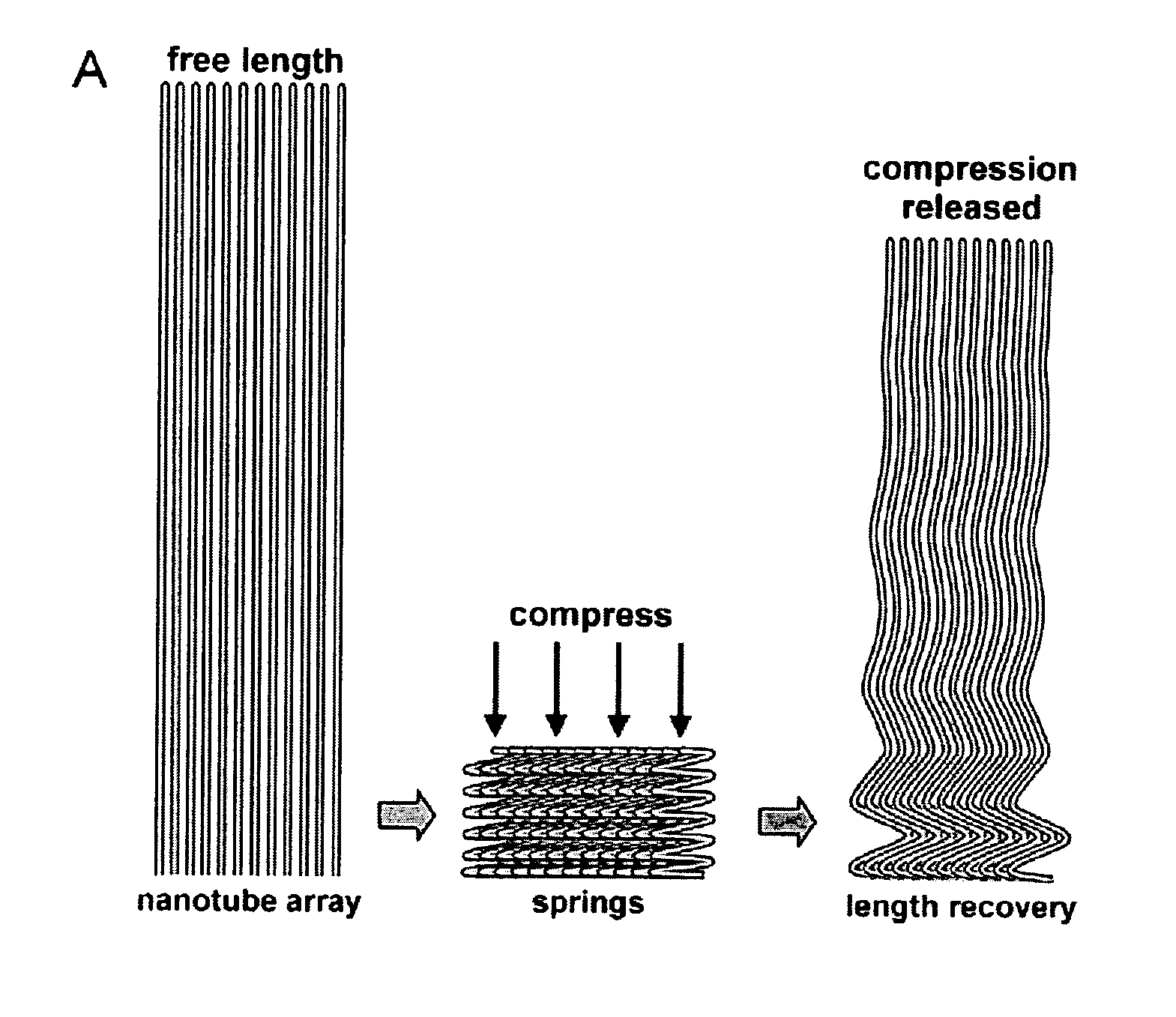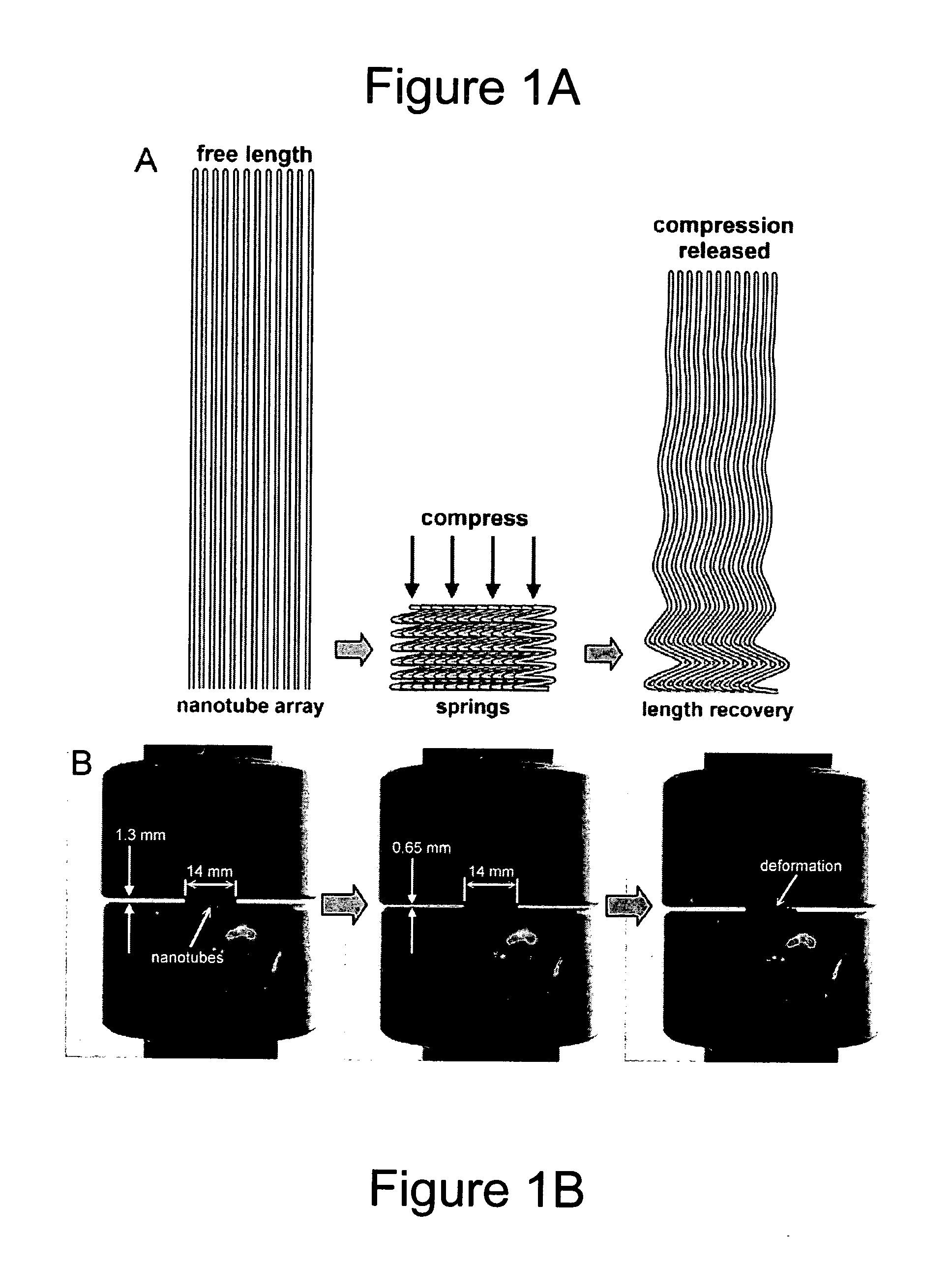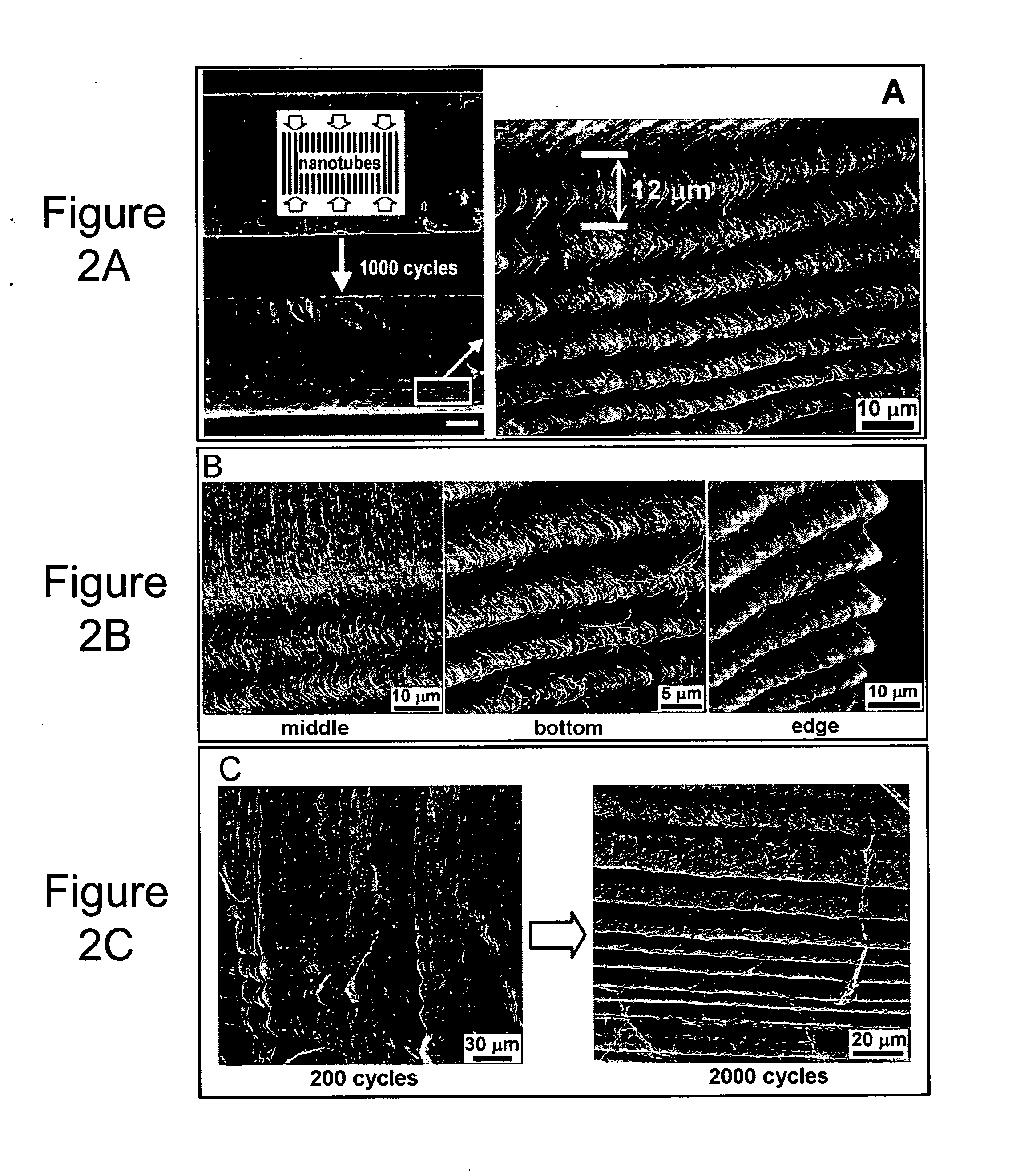Super-compressible carbon nanotube films and micro-bundles
a carbon nanotube film, super-compressible technology, applied in the field of open-cell foams, can solve the problems of poor resilience of metallic foams upon load release, and opposing factors
- Summary
- Abstract
- Description
- Claims
- Application Information
AI Technical Summary
Benefits of technology
Problems solved by technology
Method used
Image
Examples
Embodiment Construction
[0015] The present inventors have developed a carbon nanotube foam wherein individual nanotubes serve as strong nanoscale struts. The space between the nanotube struts serves as the interconnected network of voids of an open-cell foam. The carbon nanotube struts are spatially separated from each other, may be singlewalled or multiwalled, and may be chemically crosslinked. The nanotube foam exhibits super-compressible, foam-like behavior, and can be repeatedly compressed to more than 85% of its thickness. Under compression, aligned nanotubes of the foam collectively form an aligned zigzag pattern that can fully fold and unfold to free length elastically upon load release. Compared to conventional low density flexible foams, the carbon nanotube foam exhibits superior mechanical properties. For instance, the carbon nanotube foam exhibits at least one of a compressive strength of at least 12 MPa, such as 12-15 MPa; a recovery rate of at least 120 mm / min; a sag factor of at least 4; a Po...
PUM
| Property | Measurement | Unit |
|---|---|---|
| compressive strength | aaaaa | aaaaa |
| compressive strength | aaaaa | aaaaa |
| diameter | aaaaa | aaaaa |
Abstract
Description
Claims
Application Information
 Login to View More
Login to View More - R&D
- Intellectual Property
- Life Sciences
- Materials
- Tech Scout
- Unparalleled Data Quality
- Higher Quality Content
- 60% Fewer Hallucinations
Browse by: Latest US Patents, China's latest patents, Technical Efficacy Thesaurus, Application Domain, Technology Topic, Popular Technical Reports.
© 2025 PatSnap. All rights reserved.Legal|Privacy policy|Modern Slavery Act Transparency Statement|Sitemap|About US| Contact US: help@patsnap.com



